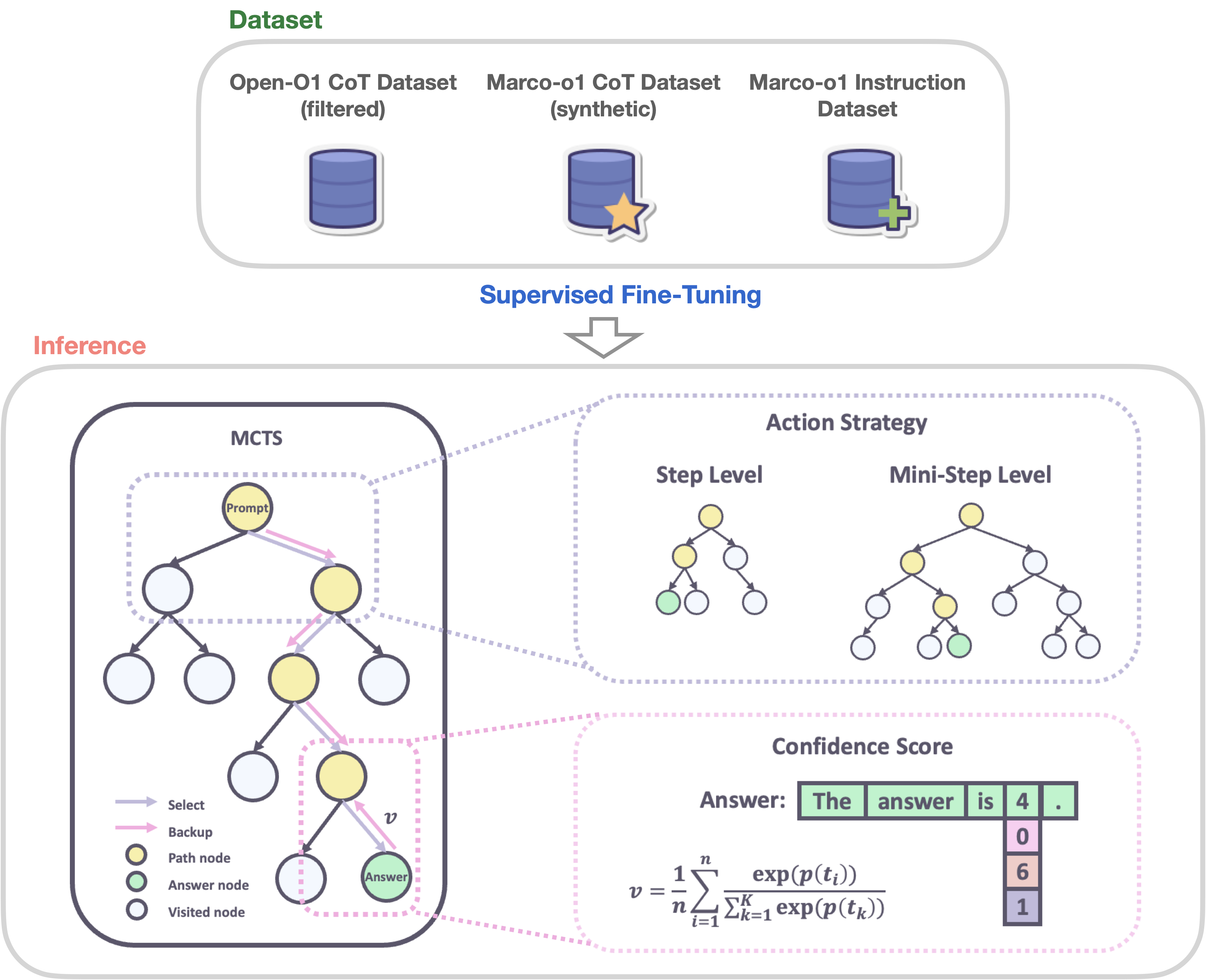Macro-o1 7B is the first o1-like open source LLM. In this post, we will dive into its training paradigm and its inference implementation.
- Code link: https://github.com/AIDC-AI/Marco-o1
- Paper link: https://arxiv.org/abs/2411.14405
Update on 2025/04/10:
Though this model is quite suck compared with GRPO+SFT pipeline as Deepseek-R1, its token-level value inside MCTS is quite interesting. This may potentially be a trick for pretraining small langugage model of different structure than GPT. A token-level reward formulation like this is easy to be derived since it shares the same formulation as perplexity during pretraining. However, it offers too much uncessary information in SFT stage and may cause instability.
Always be open to new ideas and value possibilities. No one knows the value of an infant.

Training Paradigm
Macro-o1 adopts full-param SFT using existing CoT datasets by OpenAI and synthetic dataset generated by open source LLM. Compared with previous SFT, a CoT dataset provides a linear path for LLM to follow, while LLM can also explore other action nodes for exploration. This may lead to a balance between exploration and exploitation, significantly reduces the distribution shift caused by bias within dataset.
MCTS Revisit
- Selection: Start from root R and select successive child nodes until a leaf node L is reached. The root is the current game state and a leaf is any node that has a potential child from which no simulation (playout) has yet been initiated. The section below says more about a way of biasing choice of child nodes that lets the game tree expand towards the most promising moves, which is the essence of Monte Carlo tree search.
- Expansion: Unless L ends the game decisively (e.g. win/loss/draw) for either player, create one (or more) child nodes and choose node C from one of them. Child nodes are any valid moves from the game position defined by L.
- Simulation: Complete one random playout from node C. This step is sometimes also called playout or rollout. A playout may be as simple as choosing uniform random moves until the game is decided (for example in chess, the game is won, lost, or drawn).
- Backpropagation: Use the result of the playout to update information in the nodes on the path from C to R.
Training Procedures
In the training procedure, “action” is formulated as LLM outputs, or to say, the fixed-length tokens . Then the value of each state is obtained by applying the softmax function to its log probability and the log probabilities of the top 5 alternative tokens.
Here is the log probability of token generated by LLM, and denotes the top predicted tokens at step . Thus the reward of a state is obtained as:
Dataset Preparation
Besides Open-O1 dataset, they also built a synthetic dataset using MCTS. An example of CoT data is provided in CoT_demo.json . It’s generated by Qwen2.5-7B-Instruct using the above value formulation for tree search.
Inference
Macro-o1 has a vllm implementation based on Qwen2Model.
Compared with original Qwen structure, it adds a generate_response function above model’s forward instead of directly use model.generate(). The following is huggingface implementation, which is more detailed than vllm ones.
1 | def generate_response(model, tokenizer, |
Such generation process exposes the logits of tokens to achieve the above MCTS procedures. Such token-level, or to say, logit-level value formulation is quite interesting and can be seen as a successor of sampling methods like beam search.